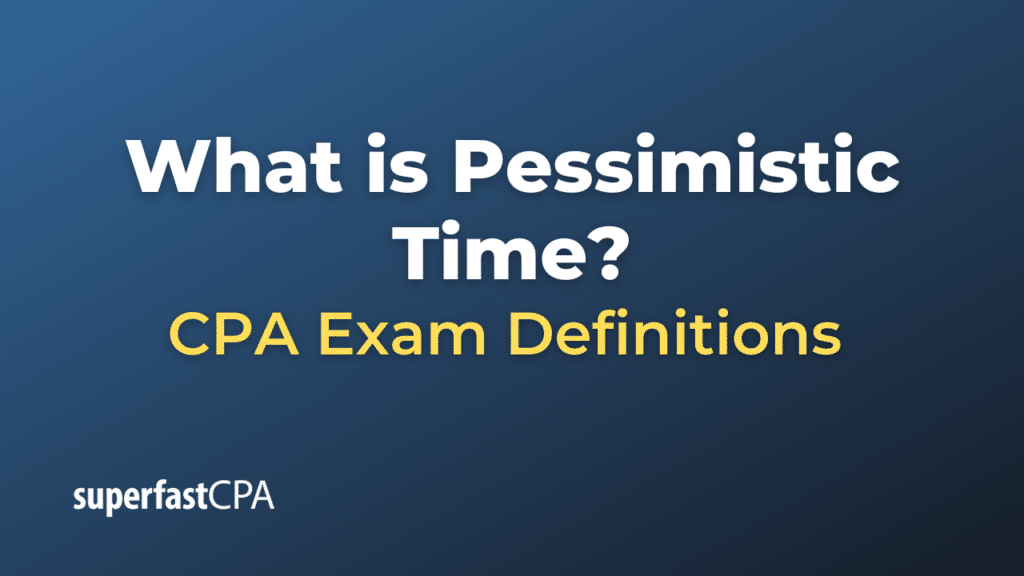Pessimistic Time
Pessimistic time is a project management concept that is part of the Program Evaluation and Review Technique (PERT).
In the context of project management, when estimating the time it will take to complete a specific task, we generally make three types of estimates:
- Optimistic Time (O): The minimum time required to complete a task, assuming everything proceeds better than is normally expected.
- Pessimistic Time (P): The maximum time required to complete a task, assuming everything goes wrong (but excluding major catastrophes).
- Most Likely Time (M): The best estimate of the time required to complete a task, assuming everything proceeds as normal.
These three estimates are used to calculate the Expected Time (TE), which is calculated using the following formula:
TE = (O + 4M + P) / 6
So, to answer your question, “pessimistic time” refers to the longest time it would take to complete a task or project, taking into account potential problems that might arise. This is a way of anticipating potential delays and building them into the project schedule.
Example of Pessimistic Time
Suppose you’re working on a project that includes a task called “Website Design”. You’ve carried out similar tasks in the past, so you have a sense of how long it might take.
- Optimistic Time (O): You think that if everything goes exceptionally well, you can complete the task in 5 days.
- Most Likely Time (M): Based on past experience, you think it will probably take about 7 days.
- Pessimistic Time (P): But you also know that if things go wrong, like if there are unforeseen design issues, or if there are delays in receiving assets, it could take up to 10 days.
Then you can calculate the Expected Time (TE) as follows:
TE = (O + 4M + P) / 6
= (5 + 4*7 + 10) / 6
= 42 / 6
= 7 days
So, based on these estimates, you would plan for the “Website Design” task to take about 7 days. This estimate takes into account your most likely scenario but also considers both the best case and worst case scenarios.













